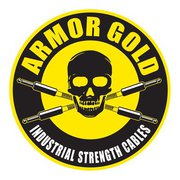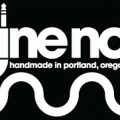 Recently I got in contact with Dustin at Armor Gold Cables and he sent us a cable to try out. Last night we recorded a couple of upcoming pedal demos and we used the Armor Gold instrument cable, and it looked, sounded and worked like a champ. I wanted to send some questions to Dustin regarding Armor Gold.. and their cables, and here were his responses.
Recently I got in contact with Dustin at Armor Gold Cables and he sent us a cable to try out. Last night we recorded a couple of upcoming pedal demos and we used the Armor Gold instrument cable, and it looked, sounded and worked like a champ. I wanted to send some questions to Dustin regarding Armor Gold.. and their cables, and here were his responses.
– When you started Armor Gold Cables what did you set out to achieve?
The primary goal was to produce an extremely durable cable. But it also had to sound great and be reasonably priced.– How are your cables different than the rest of the market?
The first thing you’ll notice is the polymer outer mesh. This mesh is common in industrial and aerospace applications were high durability is required. It helps prevent slicing and impact type damage. It also looks cool and improves visibility on a dark stage. The second thing is we prefer medium-low capacitance, as opposed to low capacitance. Most your guitar gear (guitar, amp, pickups, effects, etc.) was designed, tested, and tweaked with medium to high capacitance cable (30-50pf). So when you use low capacitance cable, you’re adding substantial treble to the recipe, which can sound too bright and harsh. Our cables measure 33pf per foot, which gives a nice combination of warmth and clarity and stays true to the original design intention of your gear.– Where do you feel other cable manufacturers fall short when manufacturing cables?
Cheap cables often use unreliable plugs, poorly shielded wire which is noisy, poor soldering technique, and overall low quality control.– What is the number one reason for cable failure?
I don’t know the number one reason, but there are many ways for a cable to fail. Plug tip breaks off, cable gets yanked out of the plug body, inner hot wire breaks from poor strain relief where it leaves the plug, cold solder joints, high impact or slicing of the cable, poor wire dressing technique inside the plug can cause the shielding to short out on the hot wire, etc.– How important should it be to guitarists to use quality cables?
It’s important for two reasons: reliability and tone. Obviously, having a cable fail in the middle of a performance sucks. Tonewise, it’s no longer myth that cables make a noticeable difference. Anyone can compare a 20 foot long 20pf cable to a 50pf cable and easily hear the difference.– What are your thoughts on cable impedance and the use of buffers?
I don’t think you need a buffer in your guitar unless your running a super long cable. Most pedals have buffers in the bypass… some make your tone brighter, some duller, the better ones are neutral. It’s just something you have to consider and work with. The advantage is you can run a long cable from your buffered pedal to the amp and not have to worry about treble roll off.– Tell me a little about your company
We are a growing USA company. Our Founder and Designer is Joe Naylor of the Naylor Amps, Reverend (Guitars, Amps, Basses, Pedals) fame. All of our products are designed and made in the USA. Our HQ is in Orange County, California, and we also have roots in Nashville and Detroit. Our cables are used by people all over the globe from a tone seeking bedroom picker to Grammy award winning artists.– Any new designs coming out in the near future?
We don’t like spoiling surprises! The ideas are flowing and there will be new products out this year. Stay tuned…
The cable I received had the mesh, quality plugs and sounded great. It was a 20′ cable, and didn’t notice any signal dulling/capacitance with it. Their prices are nice as well. This 20′ version can be purchased direct for $44.99, not bad. All their instrument cables have lifetime warranty, and have a 60 day trial period. I also thought it was interesting that it landed in the Guitar Player’s 49 guitar cable winner’s circle.
If you get a chance, check out their website and like/follow them on Facebook and Twitter. Make sure you let them know that EffectsBay sent ya!



Leave a Reply